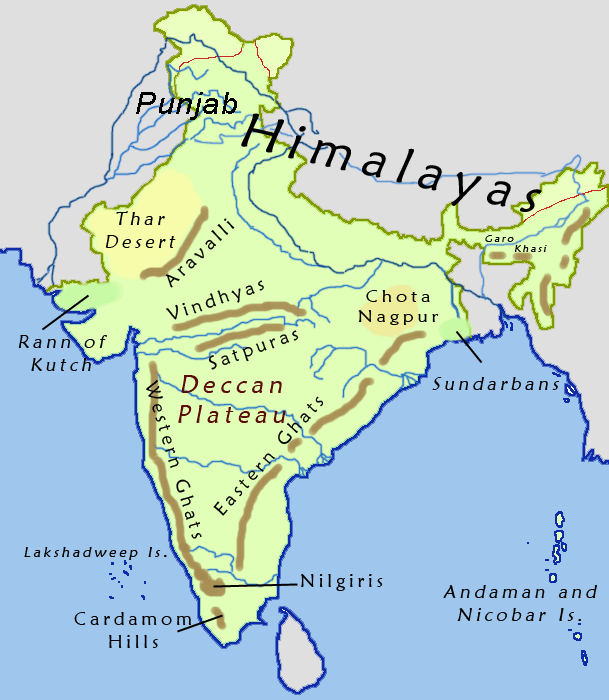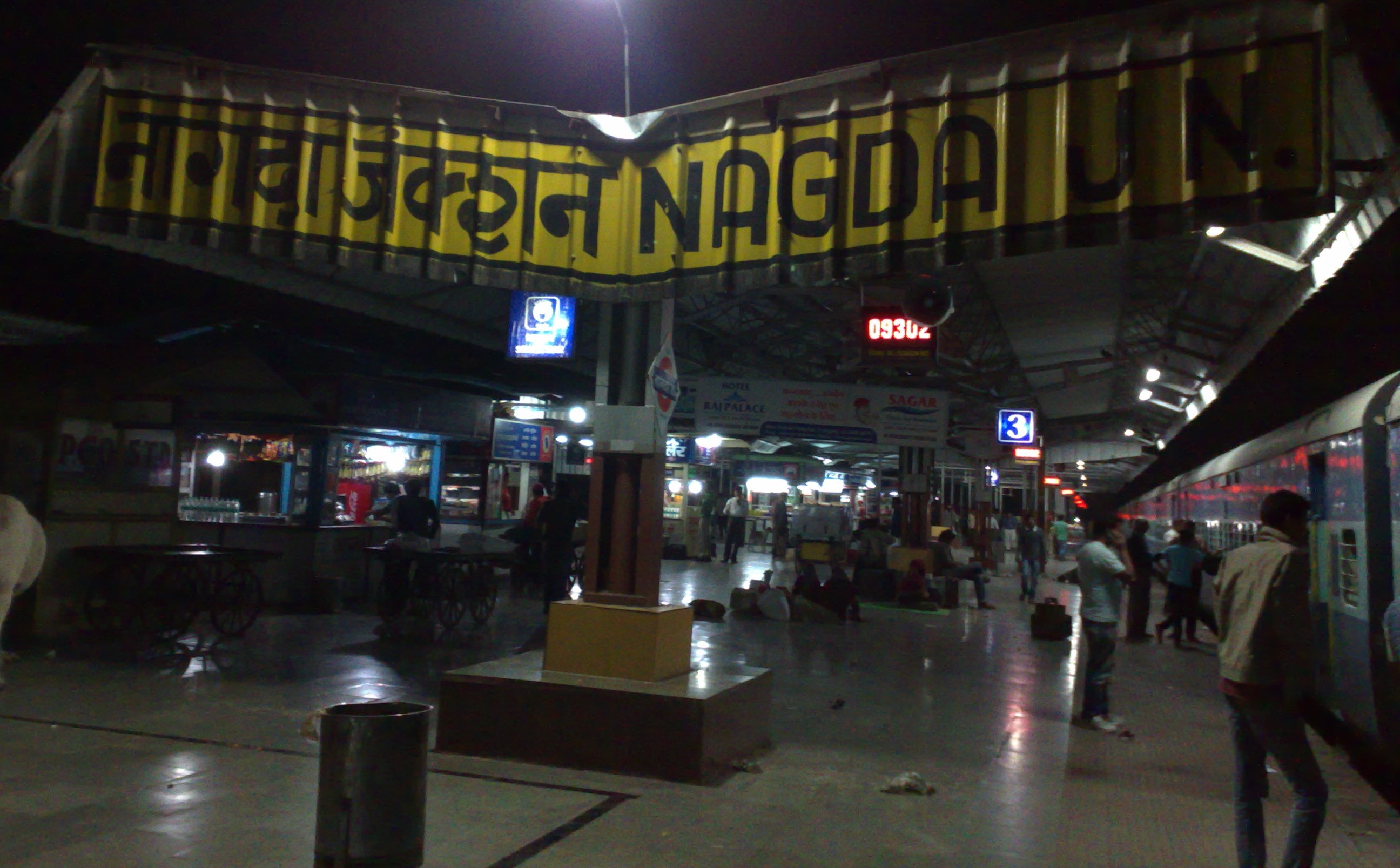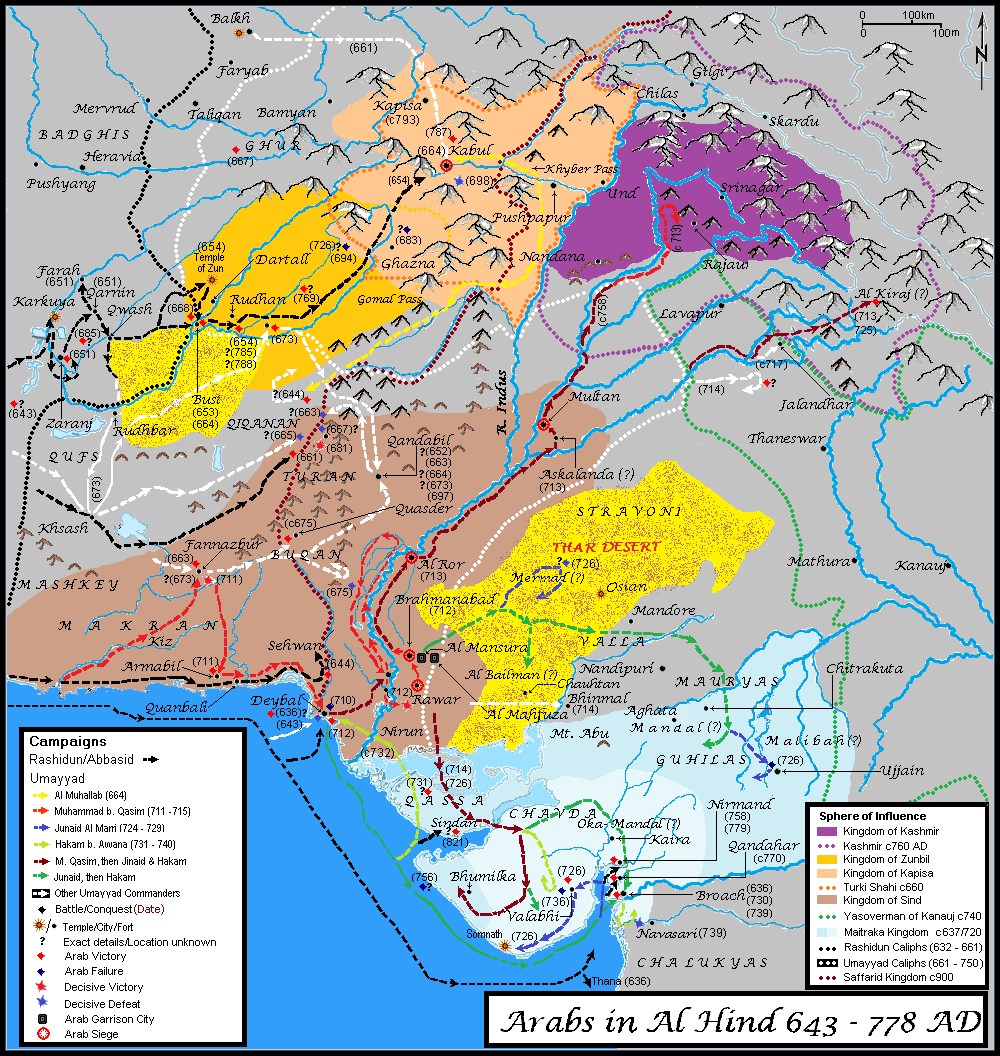|
Delwara
Delwara, nestled in the Aravalli Range hills, is a small town about 28 kms away from Udaipur, Mewar (a former state in present-day Rajasthan), and close to Eklingji Temple, on the way to the temple town of Nathdwara, in the state of Rajasthan, India. Delwara was originally known as ‘Devkul Patan Nagri’ , which means the town of god. It boasted over 1500 temples at one time, out of which there were over 400 Jain temples. Delwara was the center of learning and culture before the 15th century AD. Around the middle of the 13th century, Raja Sagar, a Deora Chauhan and a descendant of Rao Kirtipal of Jalore, was a very brave king of Delwara (Mewar). Descendants of Raja Sagar sacrificed their lives whilst fighting alongside Ranas of Mewar against Muslim conquests in the Indian subcontinent, Muslim invaders. Raja Sagar was the progenitor of Bachhawat and Bothra clan of Oswals. Sagar's son, Kunwar Bohitya was immensely influenced and inspired by Jain philosophy. Samdhar, ... [...More Info...] [...Related Items...] OR: [Wikipedia] [Google] [Baidu] |
Aravalli Range
The Aravalli Range (also spelled ''Aravali'') is a mountain range in Northern-Western India, running approximately in a south-west direction, starting near Delhi, passing through southern Haryana, Rajasthan, and ending in Ahmedabad Gujarat. The highest peak is Guru Shikhar on Mount Abu at . The Aravalli Range is arguably the oldest geological feature on Earth, having its origin in the Proterozoic era. The Aravalli Range is rich in natural resources and serves as check to the growth of the western desert. Etymology Aravalli, a composite Sanskrit word from the roots ''"ara"'' and ''"vali"'', literally means the ''"line of peaks"''. Natural history Geology The Aravalli Range, an eroded stub of ancient mountains, is believed to be the oldest range of fold mountains in India.Roy, A. B. (1990). Evolution of the Precambrian crust of the Aravalli Range. Developments in Precambrian Geology, 8, 327–347. The natural history of the Aravalli Range dates back to times when ... [...More Info...] [...Related Items...] OR: [Wikipedia] [Google] [Baidu] |
List Of Sovereign States
The following is a list providing an overview of sovereign states around the world with information on their status and recognition of their sovereignty. The 206 listed states can be divided into three categories based on membership within the United Nations System: 193 UN member states, 2 UN General Assembly non-member observer states, and 11 other states. The ''sovereignty dispute'' column indicates states having undisputed sovereignty (188 states, of which there are 187 UN member states and 1 UN General Assembly non-member observer state), states having disputed sovereignty (16 states, of which there are 6 UN member states, 1 UN General Assembly non-member observer state, and 9 de facto states), and states having a special political status (2 states, both in free association with New Zealand). Compiling a list such as this can be a complicated and controversial process, as there is no definition that is binding on all the members of the community of nations concerni ... [...More Info...] [...Related Items...] OR: [Wikipedia] [Google] [Baidu] |
Rishabhdeo
Rikhabdeo (aka Rishabhadeo) is a census town in Udaipur district in the state of Rajasthan, in north-west India. Rishabhadeo is situated from Udaipur and is on Udaipur-Ahmedabad Road. The name of the town is also Dhulev The place got its name from a Bhil chieftain named Dhuleva who guarded the temple of Lord Rishabhdev ., however it is better known as Rishabhadeo. It is a well-known pilgrim site for the temple Kesariyaji Tirth (a. k. a. the "Main Temple"). Local Bhils also worship the deity. Lord Rishabhadeo is also "Kesariaji" because a large offering of saffron (keshar, a common ingredient) is made to the deity. This temple was considered to be one of the four main religious institutions of Mewar, ruled by the Sisodia Maharanas of Udaipur, as stated by Chatur Singhji Bavji: :::"Ekling Girirajdhar Rishabdev Bhujchaar ::: Sumaron Sada Sneh so, Chaar Dham Mewar" It has been a famous Jain pilgrimage center. The famous ''Arati'' by Mulchand refers to this temple: :::"Dusar ... [...More Info...] [...Related Items...] OR: [Wikipedia] [Google] [Baidu] |
Nagda
Nagda is an industrial town in Ujjain district of the Indian state of Madhya Pradesh. It lies in the administrative headquarters of the city of Ujjain, in the Malwa region of western Madhya Pradesh. It is situated on the bank of the Chambal River. Presently, Nagda is a major industrial town with a manufacturing unit of Viscose Fibre, a Thermal Power Plant, and a Chemical Plant. Nagda is a major ISO granted Railway Junction on the Delhi–Mumbai railway line. The town is exactly 694 km from both Delhi and Mumbai. Before Nagda was an industrial town, its location near the Chambal with ample land available, along with its location between two of India's biggest markets (Delhi and Mumbai) attracted Ghanshyam Das Birla to set up a major facility. Today Grasim's industrial unit at Nagda is the largest manufacturer of Viscose staple fibre in Asia and coloured fibre in the world. Etymology The name of the town was actually ''nag-dah'' which means cremation/burning (''dah'') of snake ... [...More Info...] [...Related Items...] OR: [Wikipedia] [Google] [Baidu] |
Ujjain
Ujjain (, Hindustani language, Hindustani pronunciation: Help:IPA/Hindi and Urdu, [ʊd͡ːʒɛːn]) is a city in Ujjain district of the States and territories of India, Indian state of Madhya Pradesh. It is the fifth-largest city in Madhya Pradesh by population and is the public administration, administrative centre of Ujjain district and Ujjain division. It is one of the Hindu pilgrimage centres of Sapta Puri famous for the ''Kumbh Mela'' held there every 12 years. The famous temple of Mahakaleshwar Jyotirlinga is located in the center of the city. An ancient city situated on the eastern bank of the Shipra River, Ujjain was the most prominent city on the Malwa plateau of central India for much of its history. It emerged as the political centre of central India around 600 BCE. It was the capital of the ancient Avanti (India), Avanti kingdom, one of the sixteen Mahajanapadas. During the 18th century, the city briefly became the capital of Scindia state of the Maratha Empire, when ... [...More Info...] [...Related Items...] OR: [Wikipedia] [Google] [Baidu] |
Maurya Empire
The Maurya Empire, or the Mauryan Empire, was a geographically extensive Iron Age historical power in the Indian subcontinent based in Magadha, having been founded by Chandragupta Maurya in 322 BCE, and existing in loose-knit fashion until 185 BCE. Quote: "Magadha power came to extend over the main cities and communication routes of the Ganges basin. Then, under Chandragupta Maurya (c.321–297 bce), and subsequently Ashoka his grandson, Pataliputra became the centre of the loose-knit Mauryan 'Empire' which during Ashoka's reign (c.268–232 bce) briefly had a presence throughout the main urban centres and arteries of the subcontinent, except for the extreme south." The Maurya Empire was centralized by the conquest of the Indo-Gangetic Plain, and its capital city was located at Pataliputra (modern Patna). Outside this imperial center, the empire's geographical extent was dependent on the loyalty of military commanders who controlled the armed cities sprinkling it. During Ash ... [...More Info...] [...Related Items...] OR: [Wikipedia] [Google] [Baidu] |
Samprati
Samprati () was the 5th Emperor of the Maurya dynasty. He was the son of 3rd Mauryan Emperor Ashoka's blind son, Kunala, and succeeded his cousin, 4th Mauryan Emperor Dasharatha, as emperor of the Maurya Empire. He built 1,50,000 Jain Derasars (Jainalaya/Jain Mandir/Jain Temple) and made 1,50,00,000 Jain idols. Also he was believed to have taken an oath to dig foundation of a new Jinalaya everyday and then only he used to do navakrashi (Jain breakfast). Claim to throne Samprati was grandson of Ashoka. Kunala was the son of one of Ashoka's queens, Padmavati (who was Jain), but was blinded in a conspiracy to remove his claim to the throne. Thus, Kunala was replaced by Dasharatha as the heir to the throne. Kunala lived in Ujjain with his "Dhai Maa". Samprati was brought up there. Years after being denied the throne, Kunala and Samprati approached Ashoka's court in an attempt to claim the throne. Ashoka could not deliver the throne to his blind son, but promised Samprati would be he ... [...More Info...] [...Related Items...] OR: [Wikipedia] [Google] [Baidu] |
Jain Temple
A Jain temple, Derasar (Gujarati: દેરાસર) or Basadi (Kannada: ಬಸದಿ) is the place of worship for Jains, the followers of Jainism. Jain architecture is essentially restricted to temples and monasteries, and Jain buildings generally reflect the prevailing style of the place and time they were built. Jain temple architecture is generally close to Hindu temple architecture, and in ancient times Buddhist architecture. Normally the same builders and carvers worked for all religions, and regional and period styles are generally similar. For over 1,000 years, the basic layout of a Hindu or most Jain temples has consisted of a small garbhagriha or sanctuary for the main murti or cult images, over which the high superstructure rises, then one or more larger mandapa halls. Māru-Gurjara architecture or the "Solanki style" is, a particular temple style from Gujarat and Rajasthan (both regions with a strong Jain presence) that originated in both Hindu and Jain temp ... [...More Info...] [...Related Items...] OR: [Wikipedia] [Google] [Baidu] |
Jainism
Jainism ( ), also known as Jain Dharma, is an Indian religions, Indian religion. Jainism traces its spiritual ideas and history through the succession of twenty-four tirthankaras (supreme preachers of ''Dharma''), with the first in the current time cycle being Rishabhadeva, whom the tradition holds to have lived millions of years ago, the twenty-third ''tirthankara'' Parshvanatha, whom historians date to the 9th century BCE, and the twenty-fourth ''tirthankara'' Mahāvīra, Mahavira, around 600 BCE. Jainism is considered to be an eternal ''dharma'' with the ''tirthankaras'' guiding every time cycle of the Jain cosmology, cosmology. The three main pillars of Jainism are ''Ahimsa in Jainism, ahiṃsā'' (non-violence), ''anekāntavāda'' (non-absolutism), and ''aparigraha'' (asceticism). Jain monks, after positioning themselves in the sublime state of soul consciousness, take five main vows: ''ahiṃsā'' (non-violence), ''satya'' (truth), ''Achourya, asteya'' (not stealing), ''b ... [...More Info...] [...Related Items...] OR: [Wikipedia] [Google] [Baidu] |
Chauhan
Chauhan, historically ''Chahamana'', is a clan name historically associated with the various ruling Rajput families during the Medieval India in Rajasthan. Subclans Khichi, Hada, Songara, Bhadauria, Devda etc. are the branches or subclans of Chauhan Rajputs. Origin The word ''Chauhan'' is the vernacular form of the Sanskrit term ''Chahamana'' (IAST: Cāhamāna). Several Chauhan inscriptions name a legendary hero called Chahamana as their ancestor, but none of them state the period in which he lived. The earliest extant inscription that describes the origin of the Chauhans is the 1119 CE Sevadi inscription of Ratnapala, a ruler of the Naddula Chahamana dynasty. According to this inscription, the ancestor of the Chahamanas was born from the eye of Indra. The 1170 CE Bijolia rock inscription of the Shakambhari Chahamana king Someshvara states that his ancestor Samantaraja was born at Ahichchhatrapura (possibly modern Nagaur) in the gotra of sage Vatsa. The 1262 C ... [...More Info...] [...Related Items...] OR: [Wikipedia] [Google] [Baidu] |
Muslim Conquests In The Indian Subcontinent
The Muslim conquests in the Indian subcontinent mainly took place from the 13th to 17th centuries. Earlier Muslim conquests include the invasions into what is now modern-day Pakistan and the Umayyad campaigns in India in eighth century and resistance of Rajputs to them. Mahmud of Ghazni, who was the first Sultan, and preserved an ideological link to the suzerainty of the Abbasid Caliphate, invaded and plundered vast parts of Punjab and Gujarat, starting from the Indus River during the 11th century. After the capture of Lahore and the end of the Ghaznavids, the Ghurid ruler Muhammad of Ghor laid the foundation of Muslim rule in India. In 1206, Bakhtiyar Khalji led the Muslim conquest of Bengal, marking the easternmost expansion of Islam at the time. The Ghurid Empire soon evolved into the Delhi Sultanate, ruled by Qutb ud-Din Aibak, the founder of the Mamluk dynasty. With the Delhi Sultanate established, Islam was spread across most parts of the Indian subcontinent. In the 1 ... [...More Info...] [...Related Items...] OR: [Wikipedia] [Google] [Baidu] |
Jalore
Jalore () (ISO 15919 : ''Jālora'' ), also known as ''Granite City'', is a city in the western Indian state of Rajasthan. It is the administrative headquarters of Jalore District. It has a river known as Jawai Nadi. Jalore lies to south of Sukri river, a tributary of Luni river and the river Jawai Nadi passes through it. The city is about south of Jodhpur and from the state capital Jaipur. Jalore hasn't grown that much in terms of infrastructure. The city center has many corporate offices like Axis Bank, Punjab National Bank, UCO Bank, Birla Sun Life Insurance Ltd, Shreeram Transport Finance Company among others. History In ancient times Jalore was known as Jabalipura - named after the Hindu saint Jabali. The town was also known as Suvarngiri or Songir, the Golden Mount, on which the fort stands. It was a flourishing town in the 8th century and according to some historical sources, in the 8th-9th centuries, one branch of the Pratihara empire ruled at Jablipur (Jalore). Raj ... [...More Info...] [...Related Items...] OR: [Wikipedia] [Google] [Baidu] |



.jpg)





